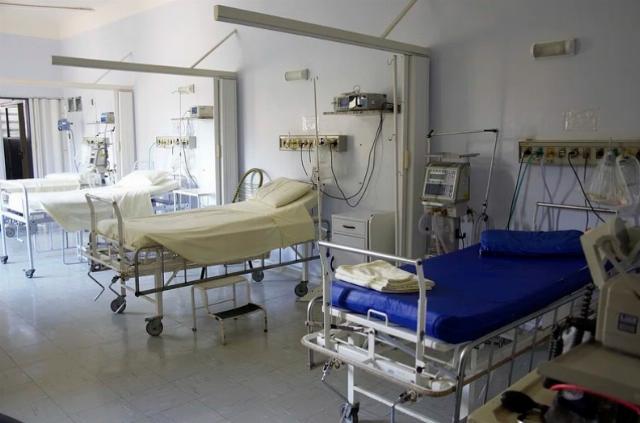The Assisted Suicide Lie
For my entire adult life, Americans have been sold the idea that allowing doctors to provide terminally ill patients intentionally deadly prescriptions counts as a merciful act. There are several angles. The patient, who has no hope of recovery, gains some element of control by choosing the date of death. Hastening death is presented as a reasonable measure when someone who is already dying is suffering intractable pain.
Assisted suicide gets a lot of sympathetic media coverage. The discussion is frequently accompanied by images of a frail, emaciated individual in a hospital bed.
Discussion of the practice is framed as legalizing assisted suicide. But it’s unlike the situation where jurisdictions have legalized marijuana possession and consumption by adults. When changing laws controlling marijuana, the state is repealing legislation enacted less than a century ago.
For assisted suicide, the jurisdiction doesn’t just cease to forbid, or even change to actively permitting (perhaps requiring registration or a tax to cultivate or sell a product). The prohibition against killing the innocent is so deeply rooted in common law and legislation worldwide that words or terms used in legislation must be redefined. Then a killing with certain elements no longer violates laws against suicide, assisting someone else’s suicide, mercy-killing, or homicide.
Permitting assistance of doctors also violates the original Hippocratic Oath. The most widespread revision was written in 1964, and it doesn’t include the parts about nor providing poison or assisting others procuring poison. It’s not as though there weren’t terminally ill patients or means of accelerating their demise in the days of Hippocrates.
As I write this, at the end of 2025, twelve U.S. jurisdictions and ten nations permit what is commonly known in the U.S. as assisted suicide, physician-assisted suicide, physician-assisted dying, or assisted death. The practice goes by other names. In Canada, it’s officially Medical Aid in Dying (MAiD). Wikipedia says assisted suicide is distinct from euthanasia because the former involves a party other than the patient bringing about the death. “Active euthanasia” is what we would typically think of regarding assisted suicide: A medical professional provides the patient with the means of death, or, outside the U.S., even actively participates, as can be done in Switzerland. “Passive euthanasia” is defined as “withholding or withdrawing” life-saving treatment. This goes beyond just canceling further treatments that are hard on the body (chemo, surgery, radiation) and allowing the process of dying to take its course. “Ceasing interventions” that can extend life can extend to withdrawing hydration and nutrition. Some proponents consider hastening the patient’s death a form of palliative care, yet they consider providing food life-prolonging medical intervention.
Medical personnel and products used to end the lives of patients are full of euphemisms. Discussions of the topic are full of “patient choice,” “self-determination,” “support of patient autonomy,” “honoring patient wishes.” (I bet plenty of patients wish for sufficient pain treatment.) The “peaceful pill” is actually a caustic liquid (better have some sherbet on hand).
Despite the initial sales pitch, medically assisted suicide does not always remain restricted to expediting an imminent death. American author Norah Vincent, a long-term sufferer of depression, died in a clinic in Switzerland. Canada expanded its MAiD program to include people suffering mental illnesses and may soon extend permission to teenagers.
Even those diagnosed with a terminal illness are not necessarily bedbound at the time of the terminal act. I happened upon a YouTube channel created by a woman suffering from pancreatic cancer named Donna. In the video she made on the day she intended to take the deadly prescription, she described a visit to her horse the day before. Bedridden, she was not.
In earlier videos, Donna describes her aversion to opioids and suffering from nausea after she was prescribed tramadol, a weak opioid — not usually a first option for pain. Incidence of nausea with tramadol is 40%, compared to hydrocodone at 7% and morphine at 7–10%.
During the final three days before her scheduled death, Donna was under hospice care. Hospice staff gave her morphine, which she hadn’t previously been prescribed, during two years of treatment for pancreatic cancer. She said hospice drugs actually worked, though she later complained of severe constipation, a well known side effect of opioids. Laxatives and stool-softeners are a thing, but I guess nobody thought to be prepared to help Donna if constipation happened. She had already been prescribed the permanent cure for all pain.
The biggest lie used to sell intentionally fatal medical interventions is intractable pain. But it’s not a matter of pain too severe for opioids to relieve. When pain continues after a dose of an opioid, it just means the dose was insufficient to relieve the pain of that individual patient. Sensitivity to opioids and sensitivity to pain vary widely among humans. Where one patient may have a high pain threshold and high sensitivity to opioids, another may have a low pain threshold and low sensitivity to opioids. Both sensitivities are a spectrum.
Government regulation, not the effectiveness of opioids, is what limits law-abiding patients’ access to sufficient opioids. Diamorphine (AKA heroin) is illegal in the U.S. but can be prescribed in the U.K. The U.S. government places a limit on the amounts of opioids that can be manufactured each year, and the amounts have been going down since 2011. Since the (now revised) CDC pain guidelines of 2016, 38 states have placed extreme restrictions on strength and/or length of opioid prescriptions. Opioid prescriptions for cancer patients have been decreasing for over 10 years.
In our country, morphine is too dangerous to provide to the terminally ill. But actual means of death is counted as medical care.

Image via Pixabay.